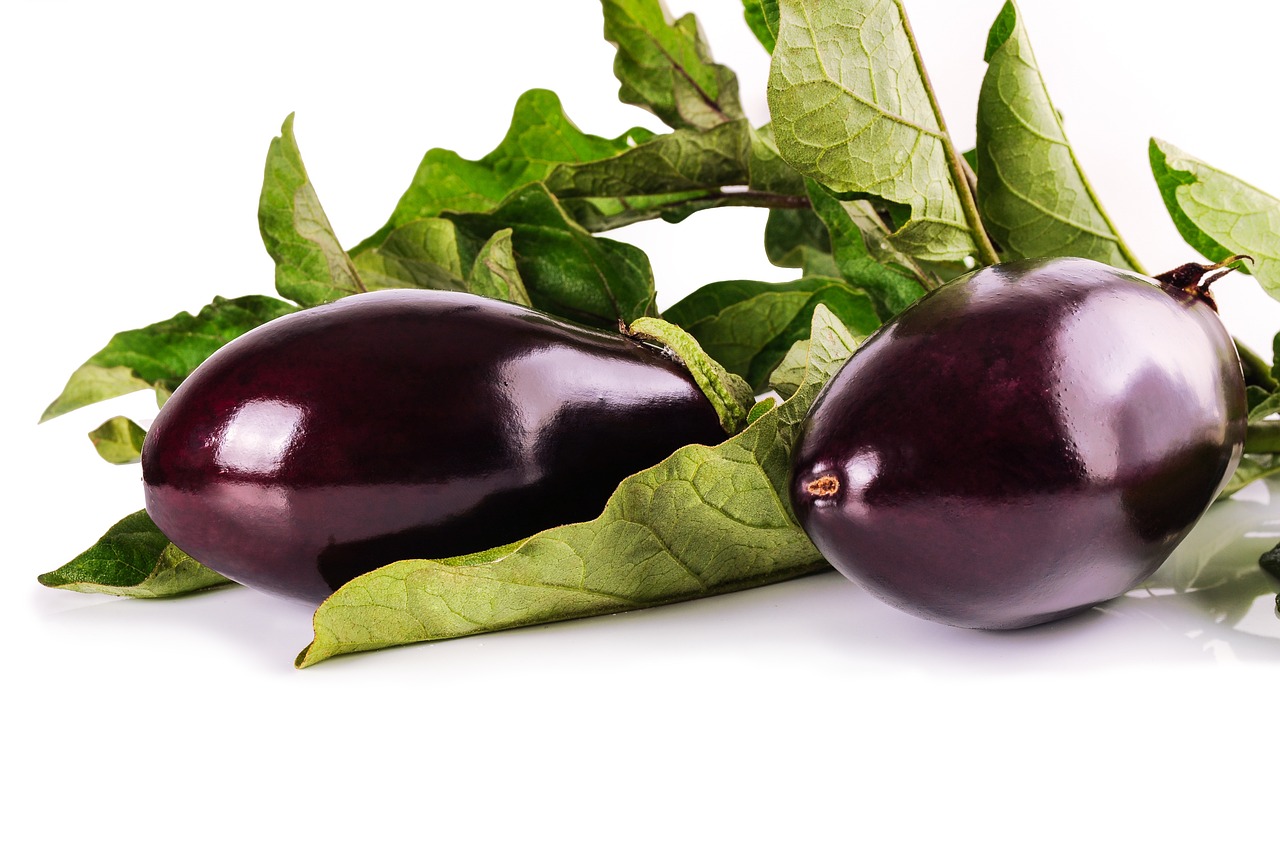Nutrition
The benefits and harms of eating chili

Although the harms of hot peppers are real and exist, this does not mean that there are not many benefits of hot pepper, here is a list of the most important potential benefits of hot pepper:
Accelerate metabolism, curb appetite, and lose excess weight.
Psoriasis resistance.
Migraine headache treatment.
Runny nose treatment.
Reducing symptoms associated with arthritis.
Pain relief.
The effects of chili on the kidneys
The University of Maryland Medical Center explains that capsaicin is linked to stomach disorders and kidney and liver damage. Consumption of capsaicin has been associated with increased stomach acid as well as reducing the effect of ranitidine and other acid treatment drugs. Capsaicin also enhances the effects of blood-thinning drugs.
Harmful effects of hot pepper on children
Digestive problems
allergic reaction
Irritation of hemorrhoids
Increased risk of cancer
burning feeling
dementia
The effects of chili on the colon
Spicy and spicy dishes increase IBS symptoms due to the active ingredient of cayenne pepper, which has been shown to increase bowel movements and abdominal pain in some individuals. Other ingredients often found in spicy meals, such as garlic and onions may also contribute to symptoms.
Benefits of hot green pepper for sex
The benefits of hot green pepper for sex that it helps to improve and stimulate blood circulation in the body, so that it reaches the sensual limbs of the penis and increases its strength, and one of the benefits of hot green pepper for sex is that it improves lust and sexual desire of men, it increases testosterone levels in the body, which is called the male hormone.
green chili pepper benefits
The benefits of hot green peppers are countless, one of the benefits of green hot peppers is to enhance eye health because of the richness of hot green peppers in vitamin A, eating it regularly may help prevent eye diseases that may appear with age and reduce the chances of infection, especially cataracts, The benefits of hot green pepper also improve the appearance of the skin, and hot green pepper helps lose excess weight, treat migraines, and prevent cancer.
Benefits of green chili for pregnant women
One of the benefits of hot pepper for pregnant women is that it helps to lose weight by improving digestion, and it also helps to reduce the appetite and desire to eat that accompany pregnancy, in addition, eating hot peppers makes you drink a lot of water and effectively helps lose weight.
chili benefits for women
Hot pepper has many benefits for women and the vagina in particular, and we introduce you to some of them here:
Increases sexual desire in women.
Increases estrogen secretion in women.
Increases vaginal moisture.
The benefits of chili for the diet
The benefits of chili for the diet are countless, it plays a role in influencing satiety centers and curbing appetite in the body by affecting the secretions of the thyroid gland, which in turn affects the hormones adrenaline and dopamine responsible for controlling appetite, and one of the benefits of chili for diet is also that it increases metabolic rates and speed, especially In metabolism and fat burning. 3- Reducing and regulating blood sugar levels.
Pepper is a vegetable rich in many nutrients important for the health of the body, vitamins, and minerals useful for the health of organ functions, such as potassium, zinc, manganese, iron, and others, and it is present in several types and strains in nature, but hot pepper, whether green or red, has the ability to Superior to burning fat, and getting rid of obesity by simply adding it to the list of daily meals we eat.
Nutritional value of chili
Hot pepper is low in calories, as a medium-sized one contains 18 calories, which is the amount of energy our body uses to benefit from hot peppers, and does not contain any percentage of fat and sodium.
The benefits of chili for the diet
One of the benefits of chili for diet is that chili helps reduce cravings for eating at inappropriate times or in excessive quantities.
Eating less of it reduces intense hunger and curbs the desire to eat more food.
Chili reduces the desire to eat salty foods, sweet and fatty foods, and increases energy at high rates; This is due to the presence of capsaicin, the chemical that gives peppers their spicy taste.
It contains antioxidants in large quantities, so it protects against the formation of free radicals that cause cancer in the body. Chili soup helps you stay satiated for longer, helping you avoid snacking or eating unnecessary calories before dinner.
Hot peppers are a source of many vitamins such as vitamin A, vitamin C, and bioflavonoids.
Chili reduces the level of harmful cholesterol in the blood and raises the good cholesterol, and this helps to promote the health of the heart and arteries.
Hot pepper is a powerful anti-inflammatory.
It contains powerful antioxidants, such as omega-3, which help fight cancer and tumors.
It fights sinus congestion and relieves its irritating effects on the patient.
One of the benefits of chili pepper for diet treats headaches and relieves migraine pain.
Regulates blood sugar levels, which reduces the body’s natural insulin secretion.
reduces appetite for food; Because it contains natural fibers, and because of its effect on thyroid secretions, which affect the hormones adrenaline and dopamine responsible for controlling appetite.
One of the benefits of chili for the diet is that it raises the metabolic rates in the body, and this increases the speed of burning fat.
The benefits of chili for the diet: Eating chili increases the rate of burning food, and increases the rate of oxygen consumption, and this makes the exercise of sports activity more effective in reducing the fat in the body.
Chili pepper to prevent heart disease
According to a study conducted by scientists at the University of Hong Kong, the compounds contained in hot peppers contribute to lowering blood pressure and cholesterol in the body.
Scientists were interested in capsaicin, the compound responsible for the pungent, spicy taste of red peppers. The researchers conducted an experiment on rodents, in which a group of mice was injected with this compound, compared to a second group that was not injected with “capsaicin”. It was found that the first group recorded a decrease in “bad cholesterol” indicators, while the second group did not witness such changes.
In addition to lowering the level of cholesterol, the compound “capsaicin” contributes to reducing the crystallization of blood clots.
The results of studies conducted in this field have previously shown that societies that consume a lot of chili record a decrease in the number of deaths from cardiovascular diseases compared to others.
Among the other benefits of hot pepper is its effect in fighting cancer, weight loss, and treating diabetes.
The difference between green, yellow and red peppers
If you are like the vast majority of people, you think that the difference between green, red, and yellow peppers is limited to color, just correct your information.
Green peppers are picked before they are fully ripe, that is, before they turn yellow and then red, and this is the reason why they are less expensive than other colors. It has a slightly sharp taste, and you do not feel its sweetness because it was picked early from the fruit.
A cup of green pepper contains 12% of vitamin A, and 137% of vitamin C.
As for the yellow pepper, which is the second stage of the pepper’s life, it is characterized by a sweet and smooth taste, but its presence is less rare in the market than green and red peppers. And about vitamins in it, a cup of it contains 3.6% of vitamin A and 282% of vitamin C.
Finally, with the most expensive and healthiest red pepper. As it is the sweetest in terms of taste, and the most water-containing in terms of health, a cup of red pepper contains 105% of vitamin A and 292% of vitamin C, which is a huge percentage three times more than the daily human need.
Food recipes
Eggplant Nutrition & Cooking

Nutritional benefits of eggplant and methods of preparation
Eggplant, also known as aubergine, is a versatile and nutritious vegetable that belongs to the nightshade family. It is rich in various vitamins, minerals, and antioxidants, making it a healthy addition to your diet. Here are some of the nutritional benefits of eggplant:
- Low in calories: Eggplant is a low-calorie vegetable, making it suitable for those trying to manage their weight.
- High in fiber: Fiber aids in digestion and helps maintain a healthy digestive system. Eggplant contains both soluble and insoluble fiber.
- Rich in antioxidants: Eggplants are a good source of antioxidants, such as nasunin, which help protect the body’s cells from damage caused by free radicals.
- Good source of vitamins: Eggplants contain vitamins such as vitamin C, vitamin K, vitamin B6, and thiamin.
- Mineral content: Eggplants provide important minerals like potassium, manganese, magnesium, and copper.
- Potential blood sugar regulation: Some studies suggest that eggplant may help improve blood sugar levels due to certain compounds found in the vegetable.
Now, let’s explore some methods of preparing eggplant:
- Baked Eggplant: Slice the eggplant into rounds or lengthwise strips, brush them with olive oil, season with salt and pepper, and bake in the oven until tender. This method is a healthier alternative to frying.
- Eggplant Parmesan: Bread slices of eggplant with breadcrumbs and parmesan cheese, then layer them with marinara sauce and mozzarella cheese. Bake until the cheese is melted and bubbly.
- Grilled Eggplant: Cut the eggplant into thick slices, brush them with olive oil, and grill them on a barbecue or stovetop grill pan until they have grill marks and are tender.
- Eggplant Stir-Fry: Cut the eggplant into small cubes and stir-fry with your favorite vegetables and protein source in a wok or skillet.
- Baba Ganoush: Roast or grill the eggplant until the skin is charred and the flesh is soft. Scoop out the flesh, and blend it with tahini, garlic, lemon juice, and salt to make a delicious Middle Eastern dip.
- Ratatouille: This is a traditional French vegetable stew that includes eggplant, tomatoes, zucchini, bell peppers, onions, and various herbs. It can be cooked on the stovetop or in the oven.

Remember to store eggplant in a cool, dry place, and use it within a few days to ensure freshness and retain its nutritional value.
Food recipes
Cooling Summer Juices

The most important juices that cool the human body in the summer and methods of preparation
During the summer, it’s important to stay hydrated and keep the body cool. Juices can be a refreshing way to achieve that. Here are some of the most important juices that can help cool the human body in the summer, along with methods of preparation:

- Watermelon Juice:
- Method: Cut a ripe watermelon into small pieces and remove the seeds. Blend the watermelon pieces in a blender until smooth. Strain the juice to remove any pulp or solids.
- Benefits: Watermelon is high in water content and helps in hydrating the body. It also contains electrolytes and vitamins, which can help in regulating body temperature.
- Cucumber and Mint Juice:
- Method: Peel and chop cucumber into pieces. Add the cucumber pieces and a handful of fresh mint leaves to a blender. Blend until smooth. Strain the mixture and collect the juice.
- Benefits: Cucumber has a high water content and can keep the body hydrated. Mint provides a cooling effect and aids digestion.
- Aloe Vera Juice:
- Method: Cut open an aloe vera leaf and scoop out the gel using a spoon. Blend the gel with water until smooth. Strain the mixture to obtain the juice.
- Benefits: Aloe vera juice has a cooling effect on the body and can help soothe inflammation and sunburn. It also aids digestion and promotes hydration.
- Lemonade:
- Method: Squeeze the juice of fresh lemons into a pitcher. Add water and sweeten with honey or sugar according to taste. Stir well to mix.
- Benefits: Lemonade is a classic summer drink that provides hydration and helps in cooling the body. Lemons are also rich in vitamin C, which can boost immunity.
- Coconut Water:
- Method: Crack open a fresh coconut and collect the water from the center using a straw or pour it into a glass.
- Benefits: Coconut water is a natural electrolyte-rich drink that helps in replenishing fluids and minerals in the body. It is hydrating and can help regulate body temperature.

Remember to use fresh and ripe fruits for juicing to ensure the best taste and nutritional benefits. Adjust the sweetness and water content according to your preference. Stay cool and hydrated during the summer!
Nutrition
Nutritional benefits of pumpkin and methods of preparation.

Nutritional benefits of pumpkin
Pumpkins offer a wide range of impressive health benefits due to their rich nutritional profile. Here are some key health benefits of pumpkins:
- Nutrient-rich: Pumpkins are packed with essential nutrients, including vitamins A, C, and E, potassium, magnesium, and dietary fiber. These nutrients support overall health and play important roles in various bodily functions.
- Eye health: Pumpkins are particularly known for their high vitamin A content, primarily in the form of beta-carotene. Beta-carotene is converted into vitamin A in the body, which is essential for good vision, particularly in low-light conditions. Consuming pumpkin can help promote eye health and reduce the risk of age-related macular degeneration.
- Heart health: The fiber, potassium, and vitamin C content in pumpkins contribute to heart health. Fiber helps reduce cholesterol levels, while potassium supports healthy blood pressure. Vitamin C acts as an antioxidant and helps protect the heart from oxidative stress.
- Immune system support: Pumpkins are a great source of vitamin C, which plays a crucial role in supporting the immune system. A strong immune system is important for fighting off infections and illnesses.
- Weight management: Pumpkins are low in calories and high in fiber, making them a great addition to a weight management plan. The fiber content promotes feelings of fullness, which can help curb appetite and reduce calorie intake.
- Digestive health: The high fiber content in pumpkins supports healthy digestion and can help prevent constipation. Additionally, the water content in pumpkins can contribute to overall hydration, which is important for maintaining a healthy digestive system.
- Skin health: The antioxidants, vitamins, and minerals found in pumpkins can help promote healthy skin. Vitamin C aids in collagen production, which contributes to skin elasticity and reduces the appearance of wrinkles. The beta-carotene in pumpkins can also help protect the skin from damage caused by the sun’s harmful UV rays.
- Mood and sleep regulation: Pumpkins contain the amino acid tryptophan, which is involved in the production of serotonin—a neurotransmitter that regulates mood and promotes good sleep. Consuming pumpkin may contribute to improved mood and sleep quality.
- Antioxidant properties: Pumpkins are rich in antioxidants, such as beta-carotene and vitamin C, which help protect the body against damage from free radicals. Antioxidants play a vital role in reducing the risk of chronic diseases, including certain types of cancer.
It’s important to note that these health benefits are based on consuming pumpkins as part of a balanced diet. Incorporating fresh or cooked pumpkin into your meals can be a delicious way to reap the benefits of this nutritious vegetable.

Pumpkin preparation methods
There are several popular methods for preparing pumpkins, depending on what you plan to make with them. Here are some common pumpkin preparation methods:
- Pumpkin Carving: Carving pumpkins is a popular activity during Halloween. To prepare a pumpkin for carving, start by cutting off the top of the pumpkin to create a lid. Scoop out the seeds and pulp from the inside, and then use carving tools to create your desired design on the outer shell. Be sure to handle sharp tools carefully.
- Pumpkin Puree: Pumpkin puree is a versatile ingredient used in various recipes such as pumpkin pie, soups, and baked goods. To make pumpkin puree, start by removing the stem and cutting the pumpkin in half. Scoop out the seeds and pulp from the center. Place the pumpkin halves, cut-side down, on a baking sheet lined with parchment paper. Bake them at 350°F (175°C) for about 45-60 minutes, or until the flesh is tender. Let the pumpkin cool, then scoop out the cooked flesh and blend it in a food processor or mash it with a fork until smooth.
- Roasted Pumpkin Seeds: Roasted pumpkin seeds make a delicious and nutritious snack. To prepare pumpkin seeds, scoop them out from the pumpkin, removing as much pulp as possible. Rinse the seeds under cold water to remove any remaining pulp. Pat them dry with a paper towel. Toss the seeds with a little bit of oil (such as olive oil) and your preferred seasonings, such as salt, garlic powder, or paprika. Spread the seeds in a single layer on a baking sheet and roast them at 325°F (160°C) for about 15-20 minutes, or until they are crispy and golden brown.
- Pumpkin Soup: Pumpkin soup is a comforting and flavorful dish. To prepare pumpkin soup, start by peeling and chopping the pumpkin into small cubes. In a large pot, sauté onions, garlic, and other desired vegetables in some butter or oil until they soften. Add the pumpkin cubes and enough vegetable or chicken broth to cover them. Simmer the mixture until the pumpkin is tender. Then, use an immersion blender or transfer the mixture to a blender to puree until smooth. Season the soup with salt, pepper, and other spices or herbs to taste.
- Baked Pumpkin Dishes: Pumpkins can be used in various baked dishes like pumpkin pie, bread, muffins, or cookies. To prepare these baked goods, you will typically need pumpkin puree as a base. Combine the pumpkin puree with other ingredients like flour, sugar, eggs, spices (such as cinnamon, nutmeg, and cloves), and baking powder/soda, according to your desired recipe. Mix the ingredients, pour the batter into the appropriate baking dish or muffin tins, and bake according to the recipe instructions.
Remember, when handling pumpkins, always be cautious of sharp tools and exercise caution to avoid injury. Enjoy your pumpkin preparations!
-

 Beauty4 years ago
Beauty4 years agoAll you need to know about the problem of excessive hair in women
-

 Nutrition4 years ago
Nutrition4 years agoBenefits of eating fruits daily
-

 Beauty3 years ago
Beauty3 years agoRecipes for hair lengthening – the fastest 8 recipes for hair lengthening and intensification
-

 Fitness4 years ago
Fitness4 years agoBack exercises and ways to apply them to get rid of problems
-

 Lifestyle4 years ago
Lifestyle4 years agoPromote a healthy lifestyle
-

 Beauty4 years ago
Beauty4 years agoBenefits of lavender – Here are more than 10 benefits of lavender for the body
-

 Business Services2 years ago
Business Services2 years agoOnline aeronautical engineering degree
-

 Beauty3 years ago
Beauty3 years agoBariatric Surgery in USA






